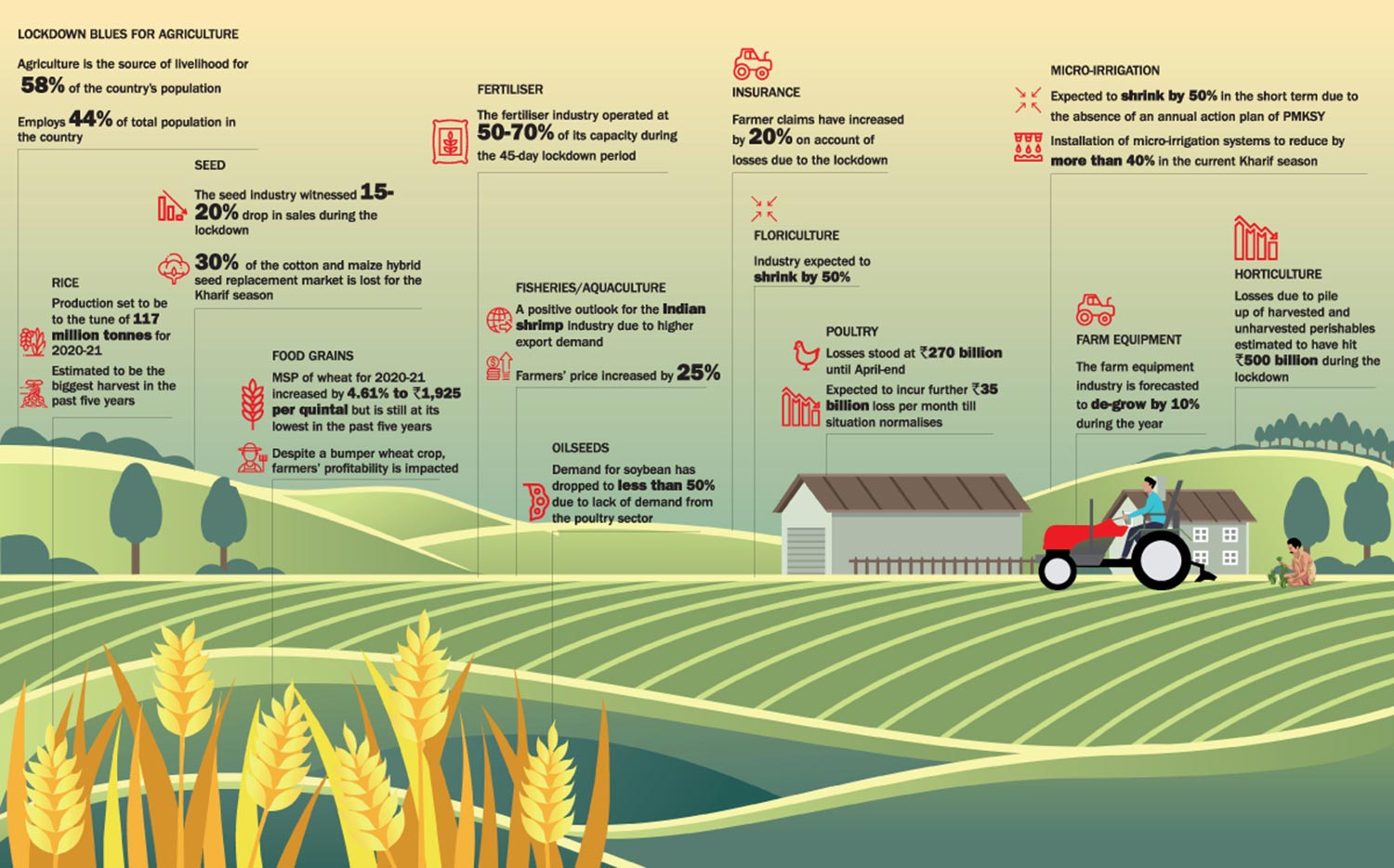On a wing and a prayer, farmers across India embarked on their toil to sow monsoon crops mid-June onwards. Still reeling from the impact of the lockdown, they might be looking at two consecutive failed crop cycles due to labour shortage, transportation problems and a broken supply chain. The pandemic coincided with the rabi (winter) harvest and kharif (monsoon) sowing seasons, and according to a FICCI-Grant Thornton report, it will affect an estimated 140 million farmer households across the country.
This, certainly, is bad news. Generating employment for 44% of the workforce, the agriculture sector is the primary source of livelihood for over 58% of India’s population and contributes approximately 17.2% to the GDP. Between 2014 and 2018, it witnessed a steady CAGR of 2.1%, states the report. Now, due to the coronavirus-triggered lockdown, the dismal harvest season has led to a cash-crunch situation for the farmers, who were already grappling with loans.

The seed sector, which is worth Rs.287 billion, witnessed 15-20% drop in sales during this period. With lesser seeds to sow, micro-irrigation sector is expected to shrink by 50% in the short-term. Consequently, the farm equipment industry, which is valued at Rs.432 billion, will de-grow by 10% during the year, forecasts the report. Meanwhile, the poultry sector is expected to incur Rs.35 billion loss per month till situation normalises, whereas pile up of harvested and unharvested perishables has already caused farmers losses of Rs.150 billion.

However, all is not gloom. The report states that rice production in India is all set to be to the tune of 117 million tonnes for 2020-21, the biggest harvest in the past five years. Moreover, the supply situation in most states is gradually normalising. According to an Anand Rathi report, the lockdown had severely impacted arrivals in wholesale agricultural markets in March and April.
Meanwhile, Edelweiss Securities notes that a healthy sowing season is helping the sector recover. Even though COVID-19 posed multiple challenges, the ‘essential commodity’ tag helped the industry overcome some hurdles. To ensure that growth does not take a u-turn, the government must improve on-ground logistics for uninterrupted supply.

In fact, to give a much-needed boost to the sector, the industry body has recommended several such steps to the government, in its report. These include —classifying exports under essential services, integrating geospatial mapping for demand estimation, accelerating registration process of new molecules in the agro-chemicals sector, purchasing milk powder and butter at remunerative prices to manage excess capacity generation, developing custom hiring centres (CHCs) to help marginal farmers adopt use of machinery, calculating agri-input cost on the basis of one hectare for DBT, creating an agri council and encouraging more R&D facilities.
But, the Indian government, under its Rs.20-trillion Atmanirbhar package, has just allocated Rs.3.98 trillion to the agriculture sector. It might take another massive farmers march or the next general election, for the government to act on FICCI’s recommendations. Till then, the beneficiaries can only hope that the allocated amount reaches them and not the pockets of deceitful officials.









 Just one email a week
Just one email a week